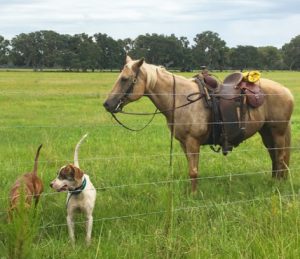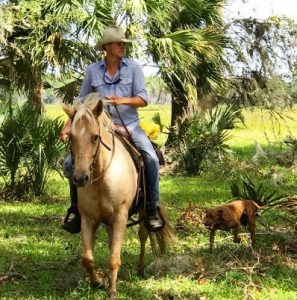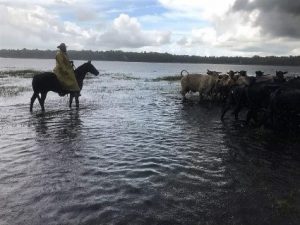By: Tim Wilson, UF/IFAS Extension, St. Johns County and J.K. Yarborough, UF/IFAS Extension, Seminole County

When Ponce de Leon brought cattle and horses to Florida in the 1500’s, he established a cattle industry that today continues to provide high quality beef as a protein source. In the early days, cattle spread throughout Florida and adapted to the tropical and subtropical environments. Initially, cattle rounded-up on open range and were marketed with little management tied to their production. Industry changes, because of research and experience, has led ranchers to make improvements in general management, reproduction, nutrition, pasture management, and herd health (Capper, 2011). Subsequently, by incorporating these changes, beef production requires 33% less land, 30% fewer cattle, 18% less feedstuff and 12% less water (a portion of this is directly related to crop production improvements) when comparing production practices from 1977 to 2007 (Capper, 2011). As we streamline production practices, you may notice some cattlemen still use horses and dogs when working cattle.

Cattlemen in Florida use the ranch horses and dogs to improve their ability to get the job done. A trained ranch horse can save time and efforts when moving cattle. Trucks, ATVs, and side-by-side all-terrain vehicles all have limitations when cattle are moved in wet areas, hammocks, brush, and wetlands. Ranch horses need to have training to become familiar with loud noises and ropes swinging over their heads. Although horses provided transportation, the rancher may have a variety of tools in their saddle that include but are not limited to the following.
|
Florida cracker whip |
Named the cracker whip because of the sound it makes when used. This cracking sound is used for a variety of functions such as driving cattle in a certain direction, self-defense, a signaling tool (to get the attention of others) and the unexpected snake. Note: This tool is never used to hit cattle. |
| Rope (lasso) | When moving cattle in Florida, a rope can be a valuable tool. Since we have many hammocks, swamps and tight spaces compared to our Western counterparts, a shorter rope (30-40 ft) is preferred. |
| Spare rope (short) | Used to tie fences or other things together, very versatile tool. |
| Medical supplies | May need antibiotics, vaccines etc. depending on situation and distance from the truck. Great to have if you have an unexpected situation that requires immediate treatment. |
| Fence pliers | Used to cut wire quickly (as needed) when moving cattle and hammering staples into fence posts. |
| Fencing staples | Used to nail barbed-wire to fence posts etc. Spare coils of wire may be hung along fences to be used when patching is necessary. |
| Small caliber pistol | Used with rat shot for snakes or other predators that could cause harm to you or your herd. |
| Slicker/raincoat | Used to keep the rain off you; however, not usually effective at keeping you dry. Slickers are usually not very breathable resulting in a lot of sweating. |
Another tool a rancher uses to move cattle are ranch dogs. These are not just any dogs; they are trained to move cattle using the fight or flight system. Using trained ranch dogs in Florida allows us to maximize the use of the ranch horse. There are several breeds commonly used; however, one of the most common is the Cur dog (black mouth, black and tan and leopard varieties). To turn cattle that are running, they must be turned at the head, so regardless of breed type used, it is often preferred that they are trained to approach cattle at the head rather than the rear. These dogs need to have a little bite and grit to them to get this job done. When used alongside the ranch horse, Florida cattlemen are able move their herds easily through areas that trucks would not be able to access.
Although it may seem old fashion or maybe even romanticized, working larger numbers of cattle over the Florida landscape with horses and dogs provides efficiency. These are just a few of the many tools we use in the beef industry and when coupled with management practices such as selection, breeding, grazing, and marketing, producers can maximize beef production. The US beef supply is the safest and most efficient in the world and for this to continue, we must continue advanced technologies and proven practices to maximize production. If you have questions regarding these tools or management practices, contact your local county extension agent or large animal veterinarian.


Literature cited:
Capper, J.L. 2011. The environmental impact of beef production in the United States: 1977 compared with 2007. J. Anim. Sci. 89:4249-4261.
 0
0
